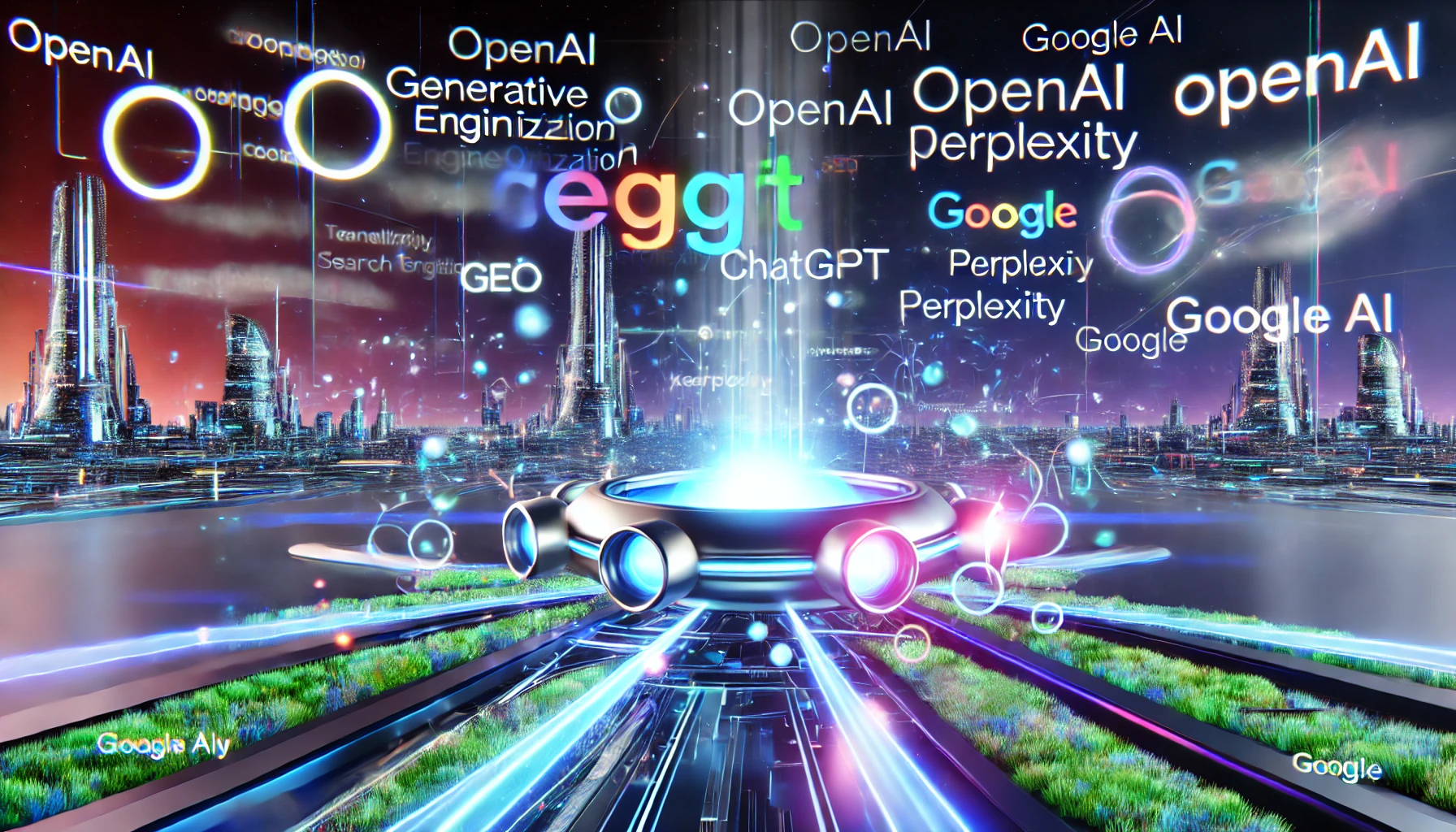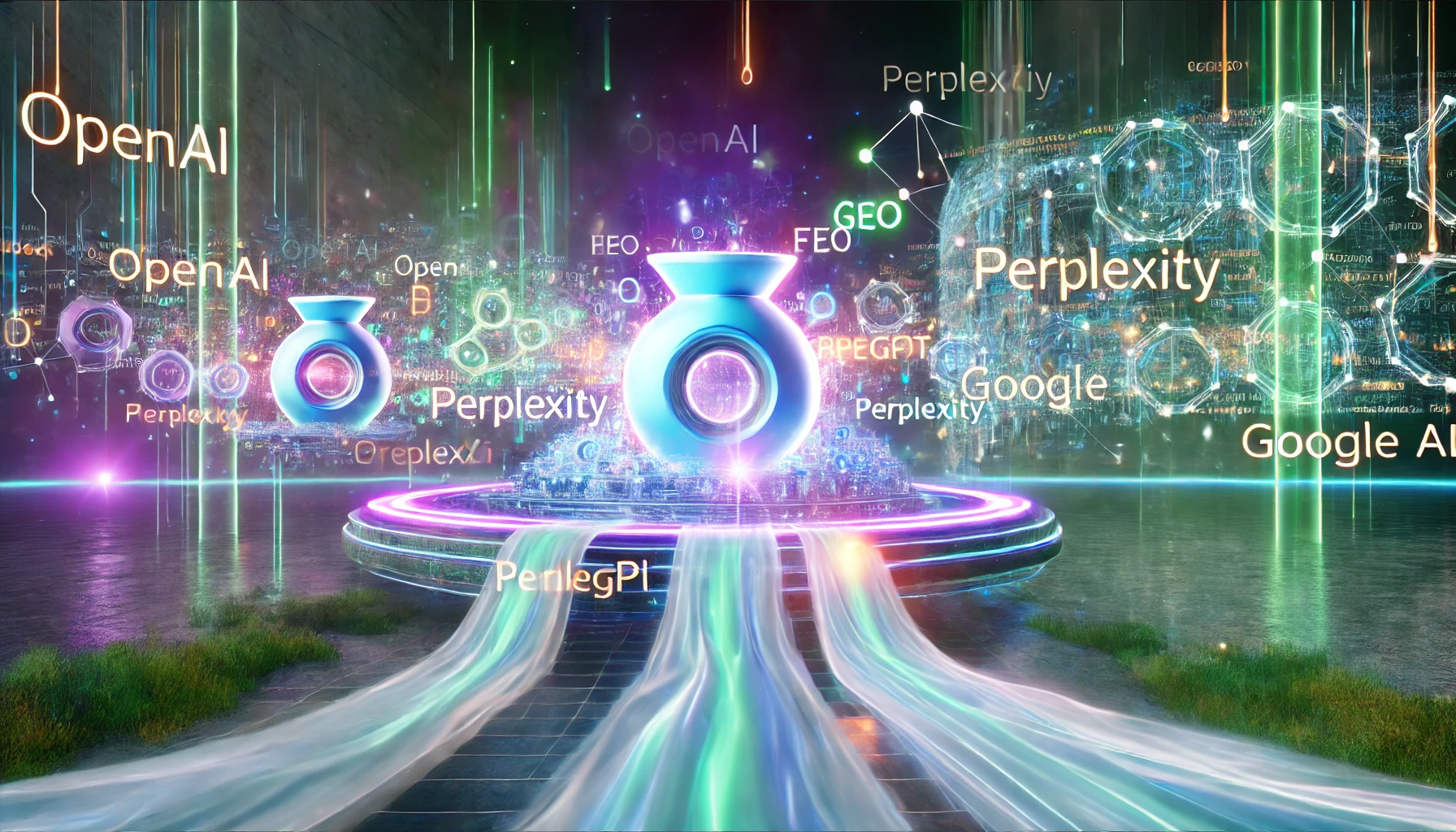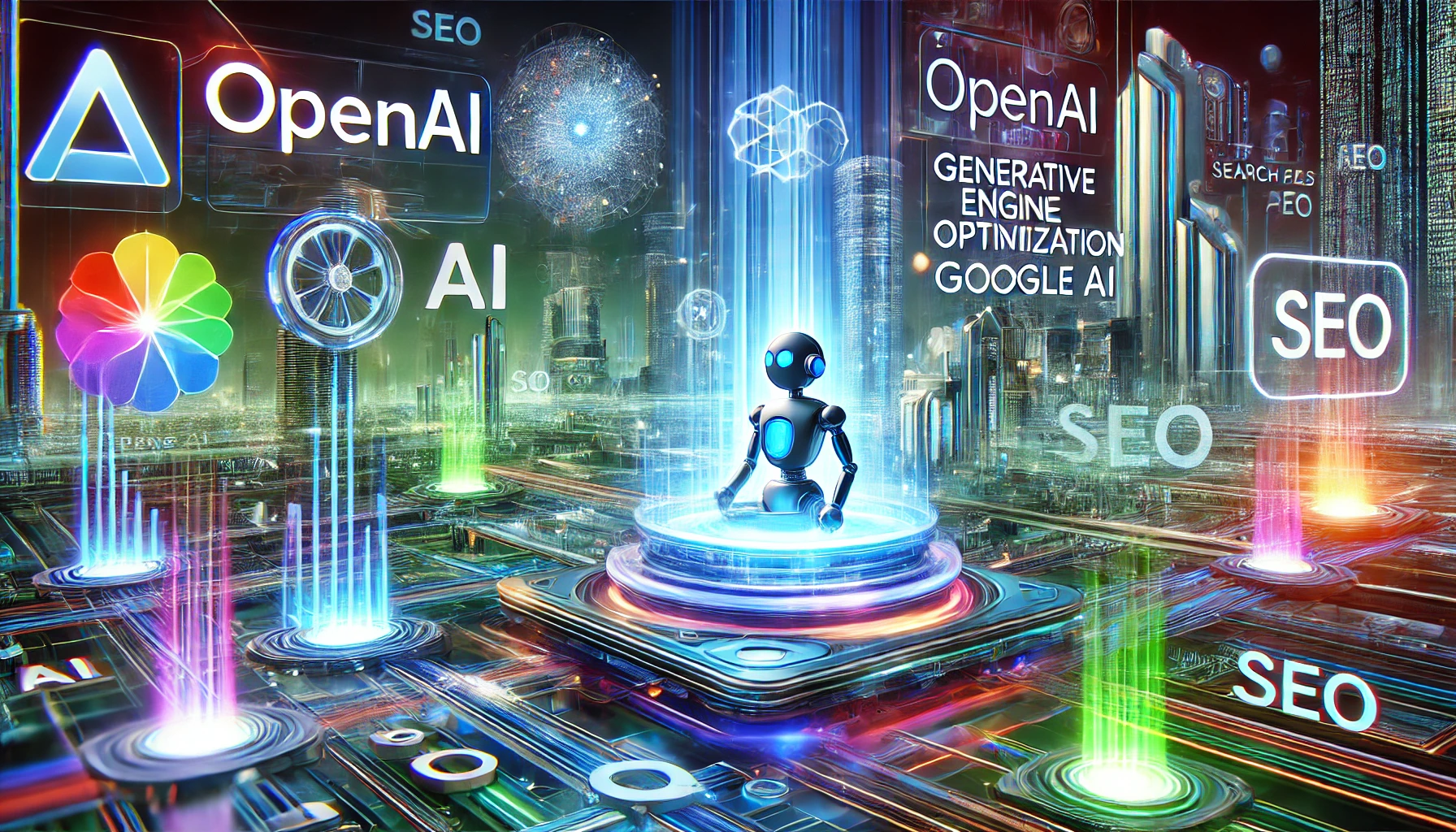Change is the only constant in today’s rapidly evolving digital marketing landscape. Staying up to date with the latest innovations isn’t just a choice – it’s a necessity for survival. One such innovation that is transforming the way businesses approach online visibility is Generative Engine Optimisation (GEO). As artificial intelligence (AI) continues to reshape how people search for and interact with information online, understanding and leveraging GEO is becoming critical for marketers.
This guide covers the fundamentals of GEO, how it differs from traditional Search Engine Optimisation (SEO), and key strategies for making your brand visible in AI-generated results.
What is Generative Engine Optimisation (GEO)?
Generative Engine Optimisation (GEO) refers to the process of optimising content specifically for AI-driven search engines, such as ChatGPT, Perplexity, Gemini, Copilot, and Google’s AI-generated overviews. As these AI engines become more prominent, appearing in their results is crucial for ensuring your brand’s visibility. Unlike traditional SEO, which focuses on ranking in search engine result pages (SERPs), GEO aims to make your content easily accessible and integrated into AI-generated responses.
GEO is more than a technical adjustment—it’s a transformative approach to how businesses create and present content. By optimising for AI engines, you position your brand to appear in concise, relevant responses generated by AI, increasing your visibility and making your brand more discoverable in this new search paradigm.

GEO vs. SEO: Similarities and Differences
While GEO and SEO share the goal of enhancing content visibility, they differ in how they approach this goal.
Similarities Between GEO and SEO:
- Visibility objectives: Both seek to increase the visibility of content to target audiences.
- Keyword strategy: Both GEO and SEO utilise keyword research to improve the discoverability of content.
- User experience: Both focus on creating content that is engaging, easy to navigate, and relevant.
- Content quality and relevance: Both GEO and SEO emphasise the importance of high-quality, user-focused content.
- Data-driven insights: Both rely on data and analytics to refine strategies, improve performance, and stay aligned with user behaviour.
- Technical optimisation: Both require attention to technical aspects like load speed, mobile optimisation, and crawlability to ensure content can be effectively indexed.
Differences Between GEO and SEO:
- Response generation: Traditional SEO aims for high rankings in search engines that present lists of web pages. GEO, on the other hand, optimises content to be synthesised by AI engines into precise, concise answers.
- Content contextualisation: SEO focuses on keyword density and meta tags to improve rankings, while GEO ensures that content is clear, contextual, and ready to be integrated into AI-generated responses.
- User intent: GEO uses advanced AI to anticipate user needs and provide more nuanced answers than SEO, which typically matches content to keywords.
- Algorithm adaptation: While SEO professionals adapt to changes in search engine algorithms, GEO focuses on evolving AI technologies and their methods for synthesising information.
- Content formatting: GEO emphasises structured data and content clarity to help AI engines accurately process and present information, whereas SEO primarily optimises for HTML tags and web layout.

Why GEO is Important
With the growth of AI-driven search, optimising for these platforms is no longer optional. AI-enhanced search engines are transforming how users find and interact with content. A Gartner report predicts that by 2026, traditional search volume will drop by 25%, with a 50% decrease in organic search traffic as users increasingly turn to AI-powered search engines.
Consumers are adopting AI search at a rapid pace—70% of users trust generative AI results, and more than 180 million people use ChatGPT monthly. These trends are clear signals that businesses must adapt by incorporating GEO into their digital marketing strategies to remain visible and competitive.
Benefits of GEO
GEO offers a range of benefits, particularly as AI continues to reshape the digital marketing landscape:
- Increased reach: GEO expands your content’s visibility beyond traditional search engines, helping you capture a broader audience as users shift to AI-powered platforms.
- Enhanced user experience: AI-driven search provides fast, accurate, and personalised answers, improving user satisfaction and loyalty.
- Competitive advantage: Early adopters of GEO can position their brand as leaders in the space, giving them a significant advantage over competitors who are slower to adapt.
- Brand authority: Being featured in AI-generated results enhances your brand’s credibility and authority, particularly when content is consistently cited by AI engines.
- Data-driven insights: GEO offers unique data insights, allowing you to refine your strategies to increase engagement, improve relevance, and meet user intent more effectively.

How Generative AI and Answer Engines Work
Generative AI search engines like ChatGPT or Google’s AI Overview synthesise data to generate detailed, relevant responses to user queries. Unlike traditional search engines that return a list of websites, generative AI delivers a nuanced, conversational answer, drawing from multiple sources to present a comprehensive response.
Here’s how these engines operate:
- Data collection: AI engines gather vast amounts of data from diverse sources to create a broad knowledge base.
- Preprocessing: The data is cleaned and formatted for consistency and accuracy before being used for training.
- Model training: The AI is trained to understand and interpret natural language, recognising patterns and processing queries.
- Content generation: Once trained, the AI uses this knowledge to generate responses, synthesising content from multiple sources to produce a coherent answer.
- Evaluation and fine-tuning: The AI evaluates the accuracy and relevance of its generated responses and continuously learns from user interactions to improve its answers.

How GEO Works
At its core, GEO focuses on aligning content with the needs of AI algorithms to ensure it is easy for them to parse, understand, and integrate into their responses. Here’s a step-by-step breakdown of the GEO process:
- Keyword and semantic research: Just like SEO, GEO starts with keyword research. However, GEO emphasises long-tail keywords, conversational phrases, and semantic analysis to align with the natural language queries AI engines process.
- Content contextualisation: GEO ensures content is contextually accurate and directly addresses user intent. AI algorithms prioritise content that is clear, relevant, and comprehensive.
- Content structure: GEO requires structuring content in a way that AI can easily interpret. This includes using concise language, bullet points, structured data (e.g., schema markup), and headers that clearly delineate sections of the content.
- Brand authority: Establishing authority is crucial for AI-driven search. Content that is well-researched, cites reliable sources, and demonstrates expertise is more likely to be prioritised by AI systems.
- Performance tracking: GEO involves tracking how content performs in AI-generated results, adjusting strategies based on data to continually improve content relevance and visibility.

Integrating GEO with SEO
Though GEO focuses on AI-driven platforms, it should be integrated with traditional SEO for maximum visibility. Both disciplines share several best practices, including keyword research, content relevance, and user experience optimisation. By combining GEO with SEO, you can build a comprehensive digital marketing strategy that maximises your reach on both search engines and AI platforms.
Strategies for Combining GEO and SEO:
- Unified content strategy: Create content that works well for both search engines and AI-driven platforms.
- Holistic keyword research: Identify keywords for both traditional search and conversational, AI-generated queries.
- Content formatting: Use structured data and readable formats to make your content easy for AI engines to process.
- Continuous adaptation: Stay up to date with changes in both SEO and GEO algorithms to ensure your strategies remain effective.

Future Potential of GEO
The potential of GEO will continue to expand as AI technologies evolve. In the near future, we can expect AI to not only provide answers to queries but anticipate user needs, offering proactive suggestions. Additionally, as voice and visual search become more integrated with AI, optimising content for these emerging formats will become crucial for maintaining visibility.
Looking further ahead, AI is likely to become more hyper-personalised, providing deeply tailored experiences based on individual preferences, behaviours, and contexts. Businesses that harness the full potential of GEO will be at the forefront of this shift, leading the way in the future of digital engagement.
Summary
Generative Engine Optimisation is revolutionising how brands optimise their content for AI-driven search engines. By combining traditional SEO with GEO strategies, businesses can ensure they remain visible in this rapidly changing landscape. GEO is more than a trend—it’s the future of search, and the sooner brands adopt this approach, the better equipped they will be to stay competitive.
If you’re ready to harness the power of GEO and position your brand for success in the age of AI, start by integrating GEO with your existing SEO strategies, prioritising content quality, structure, and relevance.